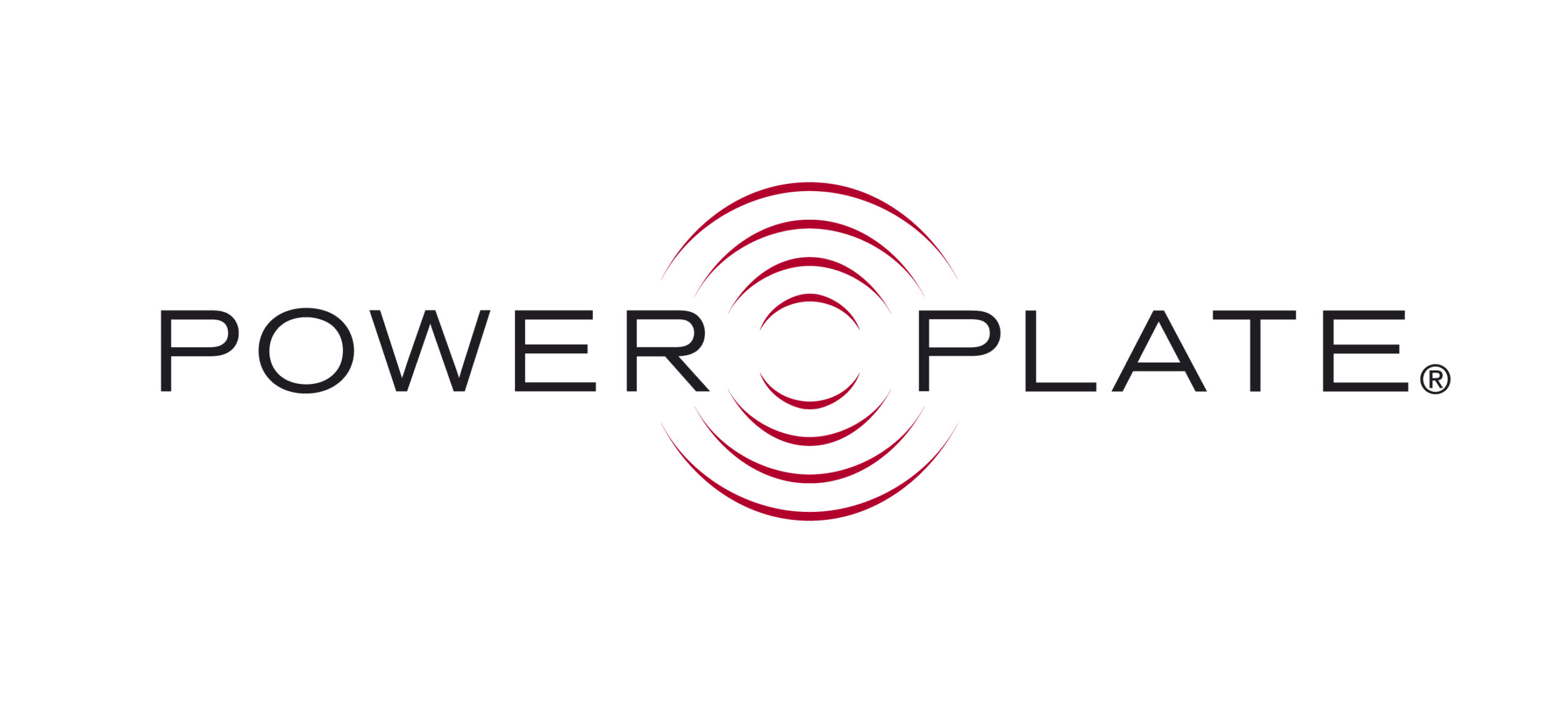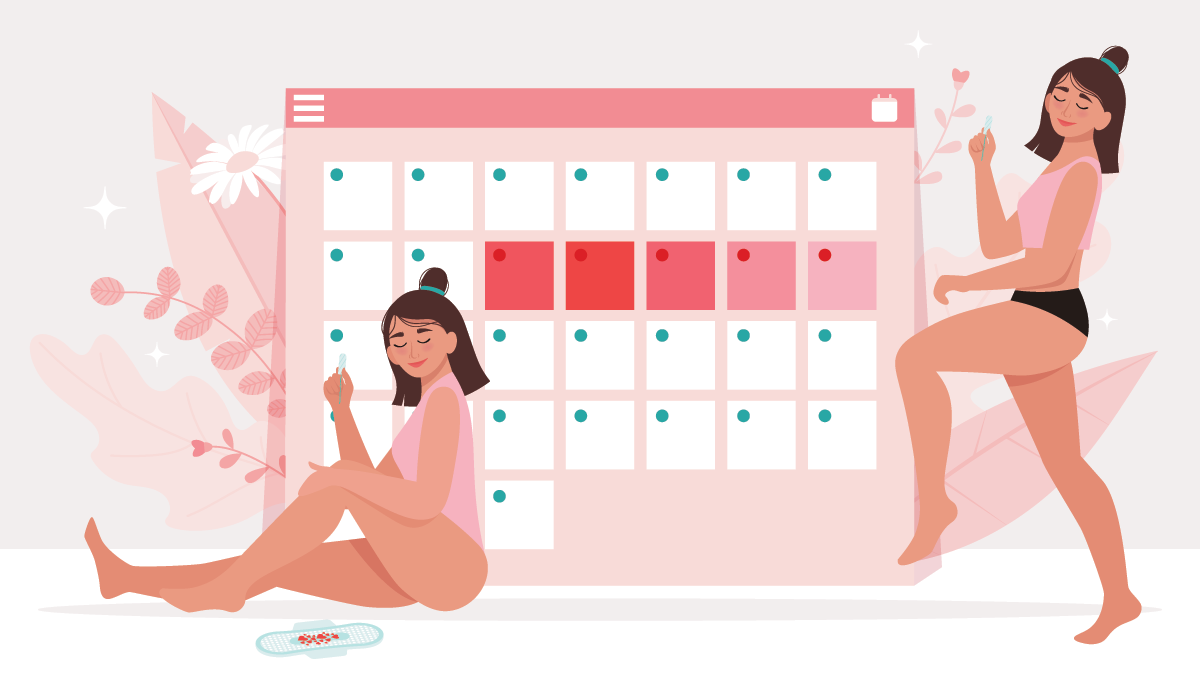Training alongside your menstrual cycle is empowering and enlightening, says Clare Hozack, Power Plate Women’s Health Ambassador and educator for Burrell Education Austraia and New Zealand.
Adding Power Plate technology supercharges our super powers and enhances our workouts. As an ex-athlete I started using Power Plate for three reasons – to train my reflexes (my sport was sailing), to help my chronic back pain, and to strength train in positions specific to my sport.
In this article I am going to explain how to use the Power Plate technology to train our female bodies as women – using the same state of mind I used to train as a sailor – specificity! I want to start by saying, this is a simplified guideline described here. This nuts and bolts, generalized, stereotyped, regular version will work for only about 15% of you! This is because only about 15% of women have a 28 day cycle.
To further complicate things, all women react to their varying hormone levels differently. Some feel amazing at some points, while others will feel downright awful. When you get your rhythm right it’s a game changer for you, and will get you working more easily, sticking to eating plans better, and getting results in a way you always had to fight for before.
Track your cycle
The first thing I recommend is that you start tracking. On any (or every) given day you want to know about things like:
- Sleep quality
- Mood
- Pain
- Skin changes
- Joints
- Temperature
- Motivation
and then match your session plans to the way you are feeling.
There are three amazing apps i’d like to share with you, but you don’t have to get high tech to track your cycle – a few notes on a paper calendar will work too!
Clue – is free, simple to use, and really great at pattern identification.
FitR Woman – is also free, can be linked to a coach (not free), and has fabulous recipe and supplement ideas to support each phase.
Wild.ai – is perhaps my favorite, since there’s plenty of opportunity to write notes, has personalised training and supplement advice, and sync’s to Strava and my Oura ring!
After at least three cycles (which may or may not be 3 months) you should start to see a pattern. A lack of pattern is a symptom that I think should warrant a visit to the GP, but not just any GP, preferably an integrative doctor, or a doctor who is passionate about women’s health. There are also Naturopaths who specialize in fertility, which is the same thing as hormonal health.
Once you’ve got your pattern, then the way to start matching your training to your menstrual cycle is very simple:
Phase 1 – menstruation
This is when you’re bleeding. It can last anywhere from 3 to 5 days and shouldn’t be heavier than what a super pad can absorb in a few hours. Bleeding that is excessively heavy, painful, or lasts longer than 5 days should be referred to a GP or fertility expert. Some women will feel excessively tired, which is also a warning sign for them to get their iron levels checked. Others will feel released and energised!
In the menstrual phase your super power is RECOVERY. Take it easy, go walking, catch up with friends, and move every day in a way that nourishes and revives you.
Some training ideas for this phase include calf massage and lower back massage on the Power Plate. The calf massage, with the back of your knees resting against the vibration, is fabulous for lymphatic flow and recovery. If you believe in reflexology then you can stimulate every internal organ by stimulating your feet, so get them on there too! Your feet also have a quarter of all the bones and joints in your body. The vibration will stimulate a beautiful synovial fluid release, making them feel light, flexible, and released!
More on training during the menstrual phase in this short video and demonstration:
Phase 2 – follicular phase, or low hormone phase
It is in this phase that women are the most like men, and experience a slow increase in oestrogen, followed by a sharp increase in Luteinising Hormone (LH) right before ovulation. This phase it is usually the most comfortable time for most women to train hard, lift heavy, and diet.
Your testosterone levels are at their highest during this phase, and we can take advantage of this by scheduling muscle building exercise during this time. For this reason, your superpower in this phase is STRENGTH/INTENSITY. This is the time to bump up those weights. This is the time to try a new sport. This is the time to flog yourself (if you ever want to!! More on that in coming episodes…..).
The biological purpose of this phase is to get pregnant. For this reason you’re more adventurous, outgoing, and open-minded. It’s the perfect time to walk in to a boxing studio for the first time, or try out a new move on your Power Plate!
Some training ideas for during this phase include:
– going heavier with your weights
– super-setting your muscle groups (i.e. go from upper body to lower body to get your heart pumping)
– mix up your training to move a little differently (in this video I did a “matrix” to introduce variablity to my movements)
More on training during the follicular phase in this video tutorial and demonstration.
Phase 3 – ovulation
Ovulation will sometimes be symptomatic for some women, with back or abdominal pain, and in others it will pass unnoticed. Either way you are more at risk of injury during this time, so slow down your reps and cut back the plyometrics where possible. For this reason, around ovulation your superpower is technique training.
What this means is that you need to slow down and get things “right”. For the home user it means you need to focus on alignment and traditional “correct” technique for things like squats, bench presses, and push ups. If you’re training with a coach it just means doing your usual program without the added edge. For example – if you were going 100% last week, go 95% intensity this week. If you went super-heavy last week, just go heavy this week. If you started boxing last week, buckle down and get good at what you’ve learned so far this week.
In our training ideas for Power Plate during the ovulation phase we omitted the plyometric (or explosive) work from our mini-circuit, and replaced it with a slower (but equally hard) exercise allowing us to concentrate on alignment and technique.
More on training during the ovulation phase in this video tutorial and demonstration.
Phase 4 – Luteal Phase
This phase is characterised by a large increase in the release of progesterone, and relatively smaller increases in oestrogen levels. In some ways progesterone is wonderful – it can help you sleep, has calming effects on the brain, lowers blood pressure, and increases anti-inflammatory agents. In other ways it can make training less comfortable. Your core temperature will rise, you will become more sensitive to insulin, and your metabolic rate will increase.
This phase of the cycle is not good for dieting, and calories should be increased by at least 100 per day if you are dieting (and ENOUGH of the guilt/blame/shame cycle if you fall of the wagon in this phase! Most diets are designed for male bodies, and female ones just don’t respond the same to restriction! It is not your fault!).
The biological purpose of this phase is to protect a pregnancy. Towards the end of this phase, accompanying the drop in oestrogen and progesterone is a not-well-understood effect on serotonin in the brain. This can play havoc with your mood, and is often dismissed as PMS, but it is a little more complex than that. If you experience severe mood, symptom, and behavior fluctuations you need to see your GP or fertility specialist.
Training can still be hard, but you’re more at risk of overheating. Since you have increased anti-inflammatory agents circulating it is a great time to lengthen your sessions, reduce your intensity again, and work on endurance. For this reason, your superpower in this phase is ENDURANCE. For example, if you were doing sets of 5 repetitions (very heavy) in the follicular phase, and sets of 10 (heavy) around ovulation, you might choose 15-20 reps now (even if it’s still hard, this is defined as “light weights”).
Your recovery abilities are also heightened in this phase, so you could possibly do more sessions, or reduce your recovery time between sets and/or sessions.
For our mini-session this week, i am going to set the power plate on 60 seconds instead of 30 seconds, hold the exercises longer, and do more sets.
The end of Phase 4
The end of phase 4 is the most common time for women to feel down, lethargic, and unmotivated, so go with it and prescribe a week (or so) of light exercise, walking, yoga, and recovery. This is not the same as sitting on the couch eating cupcakes. If it doesn’t make you feel GOOD, it isn’t good for you! Exercise and healthy eating have been shown to reduce PMS symptoms and severity of symptoms, so make sure you move in ways that boost your mood and make you feel refreshed, happy, and released!
On a side note, performance is only impaired minimally by the late luteal or menstrual phase, so don’t skip important competitions if you’re training for sport!
Go with the flow
Starting to sync your training intensity and objectives to literally “go with the flow” will make sticking to diets, exercise, and your program easier. In my experience, most women need permission to STOP – not “motivation” to train harder. Cycling your program gives you a lovely opportunity to stop periodically, which will make you stronger, mentally, emotionally, and physically in the long run.
– by Clare Hozack (read more about Clare here)
If you’re looking for a trainer qualified in these skills, look one up at https://burrelledaustralia.com/directory . If you’re a trainer looking to get qualified, contact us at https://burrelledaustralia.com .
Learn more about the Menstrual Cycle and Women’s Health generally in the Burrell Education Austraia and NZ mentoring group: https://burrelledaustralia.com/product/burrell-education-aus-nz-study-group/
REFERENCES
https://pubmed.ncbi.nlm.nih.gov/28035585
https://pubmed.ncbi.nlm.nih.gov/28795075
https://www.hormone.org/your-health-and-hormones/glands-and-hormones-a-to-z
https://www.shecares.com/hormones
https://pubmed.ncbi.nlm.nih.gov/9807639/
https://www.healthline.com/health/premenstrual-syndrome
https://pubmed.ncbi.nlm.nih.gov/2067759/
https://pubmed.ncbi.nlm.nih.gov/25279689/

